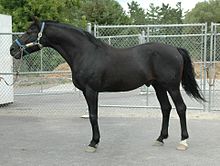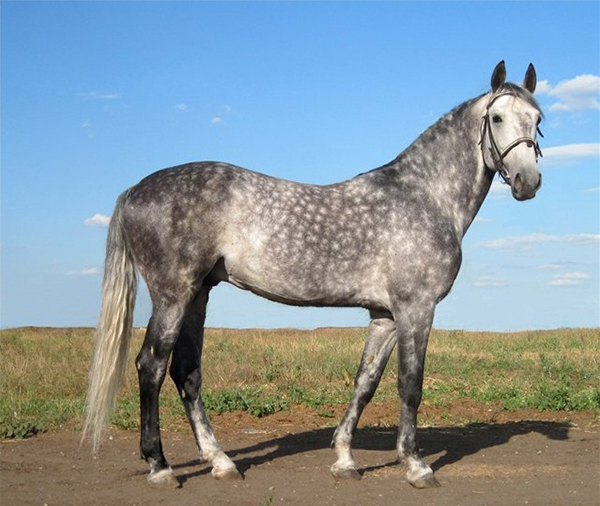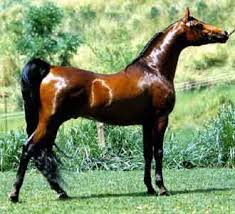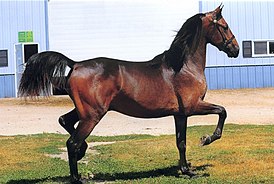Paso Fine
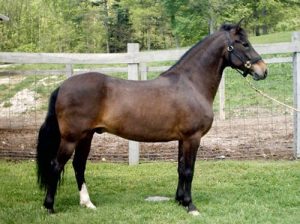 Paso Fino is a proud past and one of the oldest native breeds of the Western Hemisphere. The history of these noble animals began in Spain, where, thanks to crosses, some of the most beautiful breeds of the world appeared. The Moorish occupation of Spain brought with it a Barbary horse, also known as a barbarian horse, an animal that has a strong genetic effect on the formation of horse breeds in Europe, North Africa and the New World.
Paso Fino is a proud past and one of the oldest native breeds of the Western Hemisphere. The history of these noble animals began in Spain, where, thanks to crosses, some of the most beautiful breeds of the world appeared. The Moorish occupation of Spain brought with it a Barbary horse, also known as a barbarian horse, an animal that has a strong genetic effect on the formation of horse breeds in Europe, North Africa and the New World.
Story
Crossing with local horses allowed to get a breed of Spanish jennet, which has a soft smooth ride. Subsequently, they were crossed with the Andalusians. In 1492, Columbus discovered a continent on which there were no horses. Just as the Moors conquered Spain and brought their horses to the country, Columbus, on his second trip to the New World, delivered the first horses to Santo Domingo (now the Dominican Republic) – a group of mares and stallions from the provinces of Andalusia and Cordela.
It was a cross between Barbary, Andalusian horses and Spanish jennets. The Spanish jennets not only had an unusually comfortable gait, but were also able to transmit this gait to their offspring. The cross of these horses resulted in horses with exceptionally soft gait that could develop into the Paso Fino breed. This is a horizontal four-stroke gait, highlighting paso fino in the equestrian world. When moving amble, the front legs are thrown not forward, but sideways. At the same time, the Paso move is very soft and not burdensome for the rider.
Subsequent travelers replenished their stock in Mexico and South America, and complete isolation identified them as the ancestors of the Paso Fino. As a repair livestock for the conquistadors, the offspring of these horses were scattered across the lands subjected to attack by the invaders. Martin de Salazar, Diego de Velazquez and Fernando Cortes transported horses to Puerto Rico and Colombia, as well as to Cuba, Panama and Mexico. When immigrants from Spain appeared in the New World, they brought with them even more horses bred in their homeland. The next 500 years in the Western Hemisphere, Paso Fino divorced, improved and performed various roles, primarily the conquest, and after the research and development of both Americas.
Description
The head of the paso fino should be proportional to the body, not too small or large, the profile is preferably straight. The eyes are large and well located, very expressive, the proteins should not be excessively large. Ears are small, closely set, the tips are concave inward. The nostrils are large and mobile. The general impression is of a good shape, attentive and smart face. The neck is gracefully curved, medium length. Shoulders set obliquely, chest deep, moderate in width.
The withers are moderate, not high, smoothly passing into the back. The body is of medium length, the height at the withers should be slightly shorter than the oblique length of the body. The croup is strong and well muscled, slightly drooping. The tail is kept on departure when moving. Legs are slender with strong bones and strong, well-beaten tendons, forearms are long, metacarpus is shorter. The thigh is strong and muscular, but not too much. The backbone is strong, strong, and the joints are strong and well defined. Hooves are rounded, proportional. The tail and mane are long and lush. The height at the withers varies between 134 and 156 cm, but usually 136 – 146 cm. The growth is fully completed at the age of 5 years. Any colors and marks are found. The character of Paso Fino is very friendly, it seems that they take real pleasure in communicating with a person, they are mobile and relaxed in work.
Paso Fino possess an innate ability to amble. Newborn foals, tangled in long clumsy legs, amble their first uncertain steps. Paso Fino has a free step, and many of them show reduced canter on a free occasion. With this allure, the croup or shoulders of the animal are practically motionless. The name of the breed – Paso Fino – translates as “excellent gait.” The main paso fino pallets depending on speed are called: paso fino, paso corto and paso largo. They also move at a gallop. These are congenital gait of this breed, which do not require special training of the horse.
All paso fino gaits are enjoyable, but most owners are looking for in a walking horse not only beauty, energy and good-naturedness, but also a comfortable gait of average speed. This gait is called corto. Comparable in agility to a trot, Corto is the usual gait for long trips. A well-trained paso fino can move this gait for hours, and thanks to the softness of his horse’s ride, the rider too. Largo is an even more playful version of the same gait. A horse walking a largo can cover the ground with breathtaking speed, while still providing safety and a stable ride.
What makes paso fino such a peculiar breed? There are a million reasons why a Paso can forever settle in your heart. But the main reason is riding on it. Usually one attempt to ride is enough to make sure that the Paso Fino is completely different from the other breeds you have ever ridden. This is a Mercedes horse world. More and more surgeons and orthopedists are recommending paso fino to their patients. Paso Fino became “therapists” for injured human backs, hips, and knees. And do not let this little creature fool you – a low passo can carry an adult and a pack along the most difficult and bad roads, without really straining it.
A Paso Fino with a height of 146 cm at the withers can usually carry more weight, especially over long distances, than a thoroughbred in 160-170. Paso Fino is a versatile horse that can adapt to a wide variety of climatic conditions. They can be found in the USA, Canada, as well as in Puerto Rico, Colombia and other countries of South America. They demonstrate remarkable versatility not only in the show ring, but also in runs, dressage, rodeo and livestock. In Central and South America, there are more than 200,000 Paso Fino goals CONFEPASO (Confederation of Paso Fino Owners) brings together European countries, the USA, Puerto Rico, Colombia, Venezuela, the Dominican Republic, Panama and was formed with the aim of international competitions. Those riders who proudly say, “I have a tall horse, I don’t ride such ponies!” Should be wary of these energetic “ponies”.
They will leave you and your big horse in the dust on hiking trails. Paso Fino is like a finely tuned sports car. They are full of energy and comfort of the softest ride in the equestrian world. Paso Fino is famous for its stability, ability to manage a meager diet and a good-natured temperament. He is an ideal rancher and riding horse for long distances. They say that the Paso is able to pick up speed up to 24 km / h and maintain horizontal travel on rough terrain for a long time, without showing signs of fatigue.
In recent years, horse lovers all over the world have begun to rediscover the pleasure of riding horses with natural gait; and in many countries horse breeders are returning to the Peruvian Paso as the ideal riding animal for the 21st century rider. Due to its uniqueness, an innate four-stroke allure, the Peruvian horse is one of the softest riding horses in the world. She is also one of the most impressive horses because of her dignity and energy, allowing them to walk with style and posture as if “on parade”. The temperament of the Peruvian horse is one of the best in the world, thanks to the long Peruvian practice to exclude animals with inappropriate character from the breeding work.

